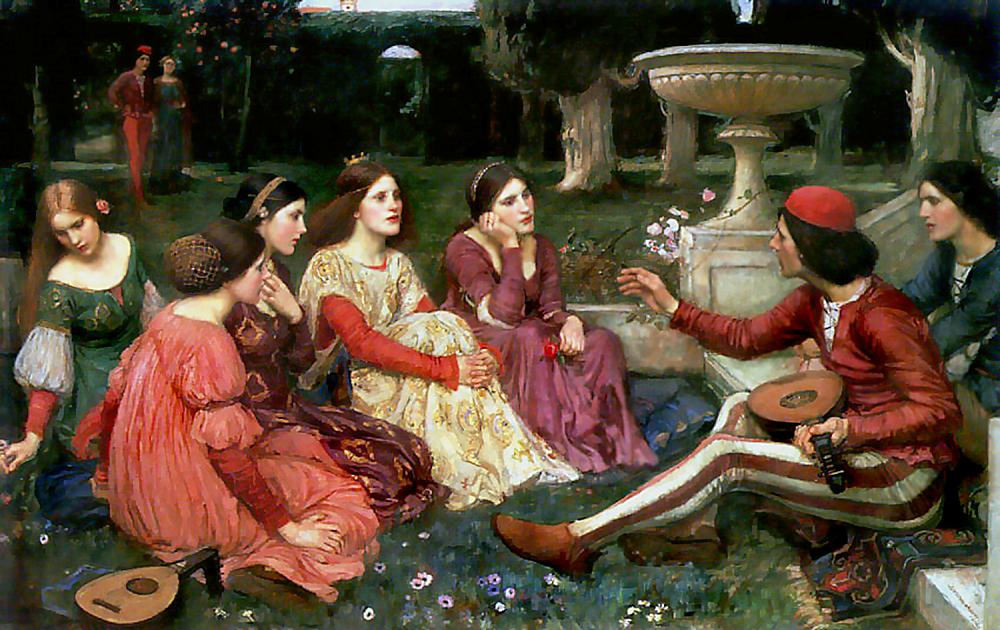"Do not hold back," I cried, "I beg you, by Zeus and by Eros himself! It will give me all the more pleasure if your tale is indeed like fiction."
And with these words, I took him by the hand and led him to a neighbouring grove, where the plane trees grew thick and plentiful, and the water flowed by cool and clear, just as it comes from freshly melted snow. I sat him down there on a low bench, and sat myself next to him.
"Well, it is time to hear your story," I said, "A setting such as this is delightful, and just right for erotic fiction."
- Achilles Tatius, Leucippe and Clitophon, Book 1, 2nd century CE (trans. Tim Whitworth)What is the best kind of landscape in which to listen to a story? I suppose it may vary according to genre, as Achilles Tatius implies, but a grove like the one Clitophon is led to, a locus amoenus of comfort, privacy and natural beauty, would seem ideal. Here landscape is a gentle backdrop, not a distraction or a subject for discourse itself. In Plato's Phaedrus Socrates is taken to a similar location, but makes a point of reminding Phaedrus as they walk there: 'I am a lover of knowledge, and the men who dwell in the city are my teachers, and not the trees or the country.' He is nevertheless very pleased with the quiet location they find by the cooling water of the Ilissus, 'full of summer sounds andscents. Here is this lofty and spreading plane-tree, and the agnuscastus high and clustering, in the fullest blossom and the greatestfragrance; and the stream which flows beneath the plane-tree isdeliciously cold to the feet. Judging from the ornaments and images,this must be a spot sacred to Achelous and the Nymphs. How delightful isthe breeze:--so very sweet; and there is a sound in the air shrill andsummerlike which makes answer to the chorus of the cicadae. But thegreatest charm of all is the grass, like a pillow gently sloping to thehead. My dear Phaedrus, you have been an admirable guide.'
John William Waterhouse, A Tale from the Decameron, 1916
Source: Wikimedia Commons
The history of literature is full of frame stories but the most famous to be set in a locus amoenus is surely The Decameron. In fact Boccaccio's ten young Florentines find refuge from the plague in three such locations: two gardens, described on the first and third days, and then a garden-like landscape, The Valley of the Ladies, which they explore on the sixth. Despite being outside the protecting walls of country villa, this valley has the essential element of seclusion - the only means of entry is a narrow path, beside which flows a clear stream. The valley floor is so circular it seems to have been drawn with compasses, 'though it seemed the work of nature', and the valley's sides are terraced like a natural amphitheatre. Vines and fruit trees grow on the south side, thick trees on the north. The stream feeds a tiny lake so transparent that you can count the stones in it. On discovering it the ladies are unable to resist a swim, the water concealing 'their chaste white bodies no better than a thin sheet of glass would conceal a pink rose.' You can well imagine one of them echoing the words of Achilles Tatius, "a setting such as this is delightful, and just right for erotic fiction." And it is on a grassy spot by this lake that they resume their storytelling the following day.
